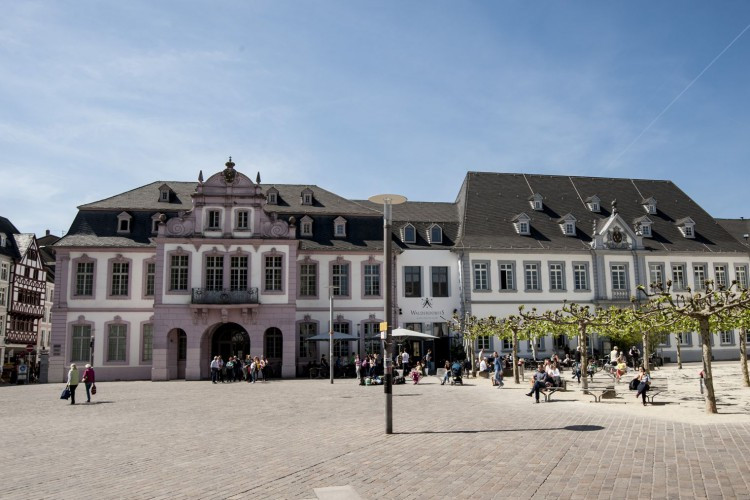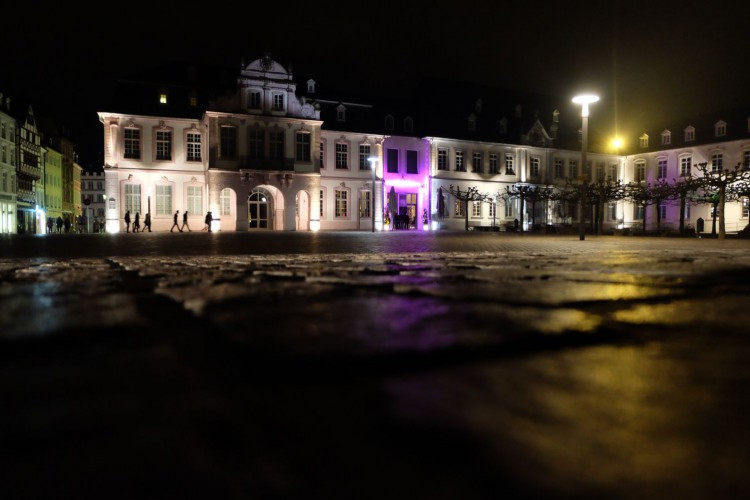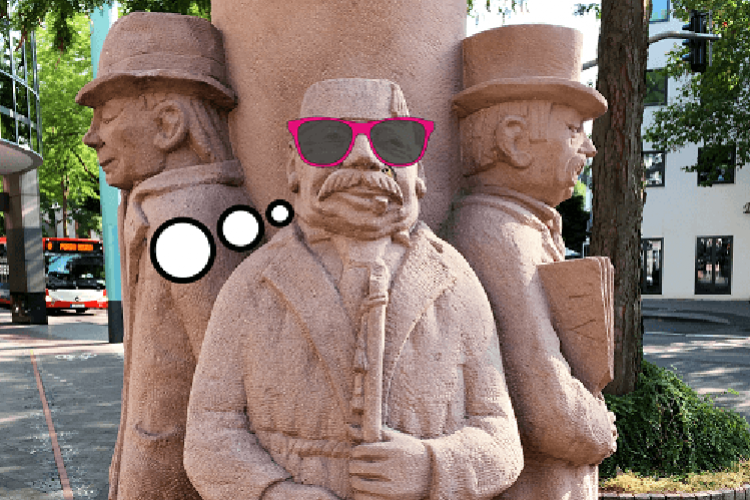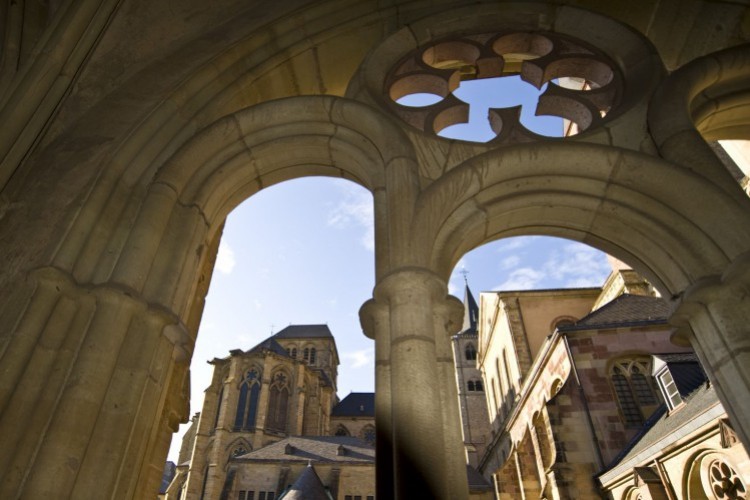Read more
The cathedral was given its western façade, and the Liebfrauenkirche followed suit. And in the 18th century, the square was dominated by rich cathedral canons, archbishops and other high-ranking church staff: With the city palace of the privy Trier Electorate councillor Count Karl Friedrich Melchior of Kesselstatt, who also managed the episcopal wine taverns (the Weinstube Kesselstatt wine tavern is today located next-door) at the southern end, the enclosed pink Palais Walderdorff at the western end, and the early-classicist gatehouse, also known in Trier as the ‘Geel Box’ (‘yellow pants’), at the northern end. The latter is part of the ‘Philippskurie‘, one of numerous curia which were built as fortified court complexes following the construction of the Domberingmauer wall surrounding the cathedral. This is one of the reasons the small laneway stretching north alongside the ‘Yellow pants’ is known as ‘Look out ’: Those who raced through it would end up in the legal district of ‘cathedral immunity’, meaning they couldn’t be caught by their ‘secular’ pursuers.
A must for: Plane-tree lovers. Cathedral-bell-listeners. Boules players. Façade observers and time-out-takers.
Church romanticism: 70%
Vastness: 30%
Wine indulgence: 50%
PSSSST! THE INSIDER TIP:
Still outside the cathedral today is the ‘Domstein’, one of four diorite columns which once supported the ancient square cathedral structure. Each of the four columns was originally twelve metres tall and weighed 65 tonnes, which equates to about ten fully-grown male elephants. While the piece outside the cathedral is only two metres long, it is said to be good luck to slide down it. Generations of children’s bottoms have thus kept the stone smooth, and continue to do so today. But honestly, there’s nothing saying that adults can’t slide into their own share of good luck. So don’t be shy!
A must for: Plane-tree lovers. Cathedral-bell-listeners. Boules players. Façade observers and time-out-takers.
Church romanticism: 70%
Vastness: 30%
Wine indulgence: 50%
PSSSST! THE INSIDER TIP:
Still outside the cathedral today is the ‘Domstein’, one of four diorite columns which once supported the ancient square cathedral structure. Each of the four columns was originally twelve metres tall and weighed 65 tonnes, which equates to about ten fully-grown male elephants. While the piece outside the cathedral is only two metres long, it is said to be good luck to slide down it. Generations of children’s bottoms have thus kept the stone smooth, and continue to do so today. But honestly, there’s nothing saying that adults can’t slide into their own share of good luck. So don’t be shy!




